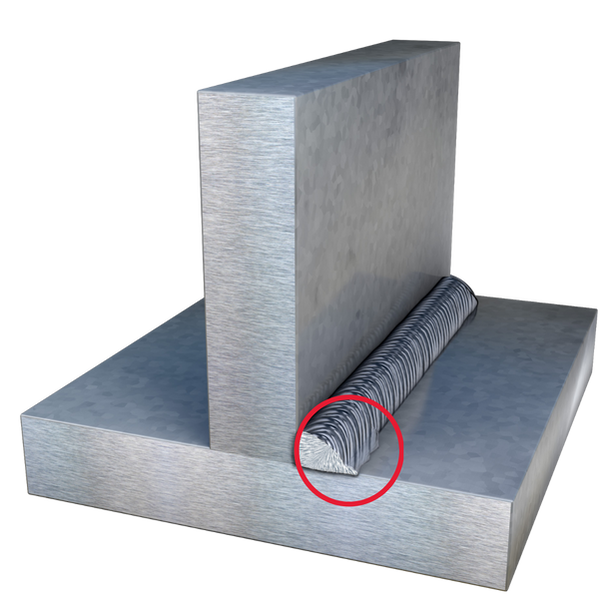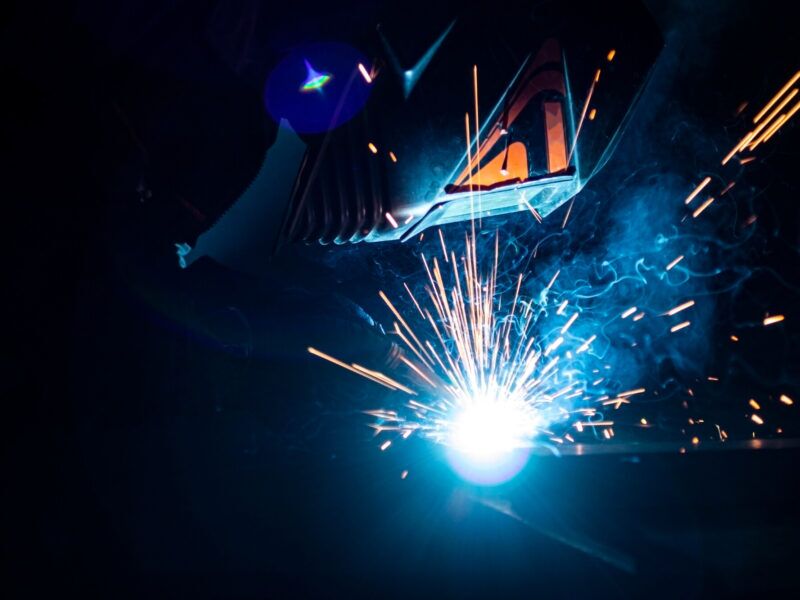Vital Tips for Welders: Protecting Against Undercut Welding and Ensuring Stronger Weld Joints
In the realm of welding, attaining solid and durable weld joints is the keystone of producing top notch work. Nevertheless, one typical obstacle that welders typically run into is undercut welding, which can compromise the integrity of the weld joint. By understanding the variables that add to undercutting and implementing the right methods and safety measures, welders can effectively avoid this concern and make sure the long life and toughness of their welds. Let's check out some necessary ideas that can aid welders navigate this difficulty and raise the quality of their welding projects.

Comprehending Undercut Welding
Undercut welding is an usual welding flaw that takes place when the weld metal falls short to effectively load the groove and results in a groove-like depression along the weld bead. This issue compromises the weld joint, making it at risk to breaking and failure under stress. Damaging can be triggered by numerous factors, consisting of extreme welding current, high welding rate, incorrect electrode angle, wrong electrode size, and poor welding strategy.
One of the main reasons for undercut welding is a discrepancy in between the welding existing and the welding speed. If the welding current is as well high or the welding speed is as well fast, the weld metal may not adequately fill the groove, leading to damaging. In addition, using an electrode that is too big can lead to a similar outcome, as the excess steel can not effectively move into the groove.
To stop undercut welding, welders must ensure they are making use of the correct welding parameters, maintain a suitable electrode angle, choose the proper electrode size, and method proper welding strategies. By attending to these elements, welders can lessen the danger of undercutting and create stronger, much more reputable weld joints.
Proper Welding Method
Effective welding technique plays a critical duty in making certain the quality and honesty of weld joints. One basic facet of proper welding method is keeping the correct angle and distance between the welding gun and the work surface.
Furthermore, a regular and stable hand activity is important for developing strong and sturdy weld joints. Welders need to go for smooth, uniform activities to make sure also distribution of the weld material. Correct control of the welding weapon and filler material is additionally essential to accomplishing ideal infiltration and blend.
In addition, regulating the heat input and picking the ideal welding specifications based upon the product being welded are essential elements in achieving top notch welds - Preventing weld undercut. Welders ought to adhere to the suggested setups supplied by welding procedure requirements and adjust them as required based upon the particular demands of the task. By understanding correct welding strategies, welders can considerably improve the stamina and reliability of their weld joints
Choosing the Right Electrode
Maintaining the proper angle and range in between the welding gun and the work surface is basic when considering the importance of selecting the best electrode in welding applications. The choice of electrode plays an important duty in figuring out the quality and stamina of the weld joint. Electrodes can be found in various kinds, each developed for details objectives and products.
To start with, choosing the ideal electrode size is crucial. Thinner electrodes appropriate for welding slim products, while thicker electrodes are much better for thicker materials and higher heat applications. Matching the electrode diameter to the density of the workpiece helps achieve a balanced weld.
Second of all, understanding the material composition of the electrode is important. official site Different electrodes are designed for welding specific materials like steel, stainless-steel, light weight aluminum, or cast iron. Making use of the proper electrode material makes certain excellent blend and minimizes the risk of problems in the weld.
Last but not least, taking into consideration the welding setting and strategy is important when selecting the electrode kind. Particular electrodes are better matched for overhead or vertical welding settings, while others work well for flat or horizontal placements. Picking the best electrode based on the welding technique improves the total weld high quality and integrity.
Preparing the Base Steel
To make certain a successful welding process, what initial steps should be taken when preparing the base metal for welding? Appropriately preparing the base steel is essential for achieving sturdy and solid weld joints. The very first step in preparing the base steel is to cleanse it extensively to remove any kind of impurities such as corrosion, oil, paint, or dust. This can be done using a cable chemical, brush, or mill solvents. Additionally, any type of existing weld product or residue from previous welding must be gotten rid of to guarantee a tidy surface for the new weld.

Conducting Post-Weld Assessments

After carrying out these assessments, welders must contrast the outcomes against sector standards and job demands to make sure that the weld joint satisfies all needed requirements. Any type of inadequacies or variances found throughout the post-weld inspection should be without delay addressed with suitable restorative actions to assure the weld's stability. By diligently doing post-weld examinations and immediately dealing with any type of problems, welders can support the quality and dependability of their job, eventually contributing to the safety and longevity of the bonded frameworks.
Conclusion

To conclude, protecting against undercut welding and guaranteeing stronger weld joints require a combination of proper welding strategy, selecting the best electrode, preparing the base steel properly, and performing post-weld inspections. By recognizing the root causes of undercut welding and carrying out the necessary safety measures, welders can produce top notch weld joints that fulfill market standards and guarantee the structural stability of the bonded elements.
Undercut welding is a typical welding issue that occurs when the weld steel falls short to appropriately fill up the groove and results in a groove-like clinical depression along the weld grain (Preventing Visit This Link weld undercut). Damaging can be triggered by different aspects, including excessive welding current, high welding speed, inappropriate electrode angle, wrong electrode size, and bad welding technique
One of the primary factors for undercut welding is a discrepancy in between the welding present and the welding rate. If the welding current is also high or the welding speed is as well fast, the weld steel might not appropriately fill up the groove, leading to undercutting.Preserving the correct angle and distance between the More Help welding gun and the work surface is essential when considering the relevance of selecting the ideal electrode in welding applications.